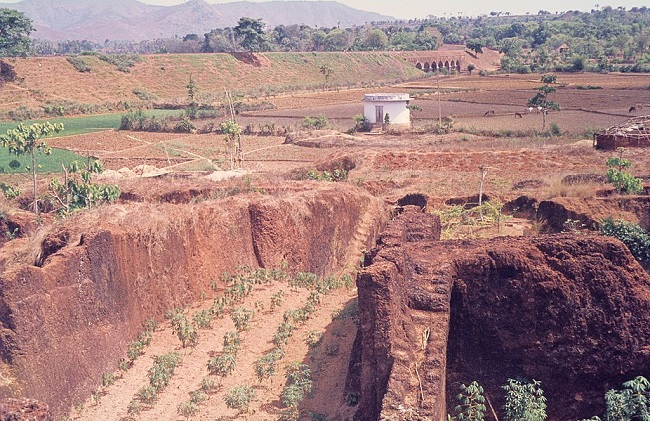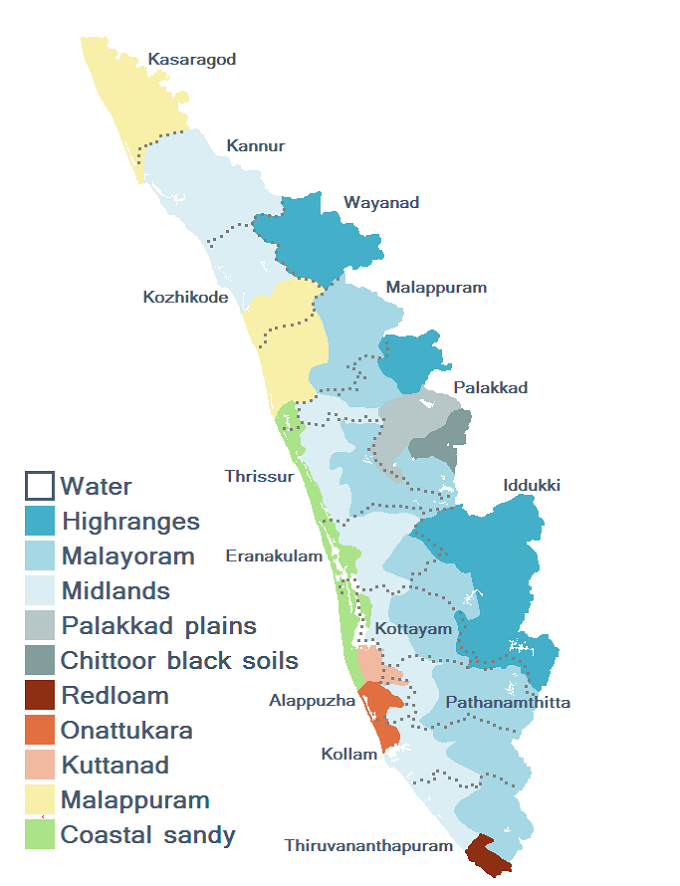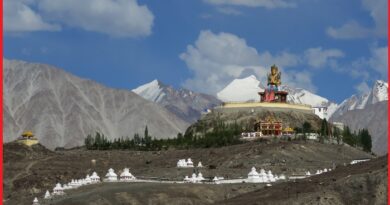Geo-heritage Monument and A marvel -Angadipuram Laterite in PWD rest house premises
The GSI has declared as its National Geological Monuments, on the occasion of the “International Conference on Lateralization” held in 1979. Angadipuram is also well known as a pilgrimage center for its famous temples, the Thirumandhamkunnu temple, and the Tali temple.

Geology
The area is comprised of sedimentary formations of Quaternary and tertiary age and is underlain by metamorphic rocks of the archean age. Sand and sandy clay of fluviatile origin represent the quaternary formations. The Tertiaries consist of sandstone and sands. The underlying crystallines, garnetiferrous quartzofeldspathic gneiss are kaolinized forming a residual kaolinitic zone below the sedimentary covers.
This exceptional formation is found above parent rock types of various compositions namely, charnockite, leptynite, anorthosite, and gabbro in Kerala. The crystalline rocks of this region are an admixture of pyroxene granulite, charnockite, and migmatite. The laterite here occurs at an average elevation of 60 m above sea level. Laterite is significant from the economic angle since mineral deposits of aluminum ore (bauxite).

Lateritisation is widespread, at places attaining a thickness of more than 10m. Extensive plateaus with laterite ‘mesas’ are common in the area. Angadipuram is the type locality of laterite falls in this district. Quaternary unconsolidated sediments are restricted to the coastal plain. They have been classified into different morpho-stratigraphic units based on their lithic content and environment of formation. Guruvayur Formation (palaeo-marine), Periyar Formation (fluvial),Viyyam Formation (fluvio-marine) and Kadappuram Formation (marine).
Mallapuram Laterite
The geological nature of Laterite was first described by Francis Hamilton Buchanan, a medical officer of East India Company, From Angadipuram in Malappuram District of Kerala. The name laterite was first coined in India by Buchanan and its etymology is traced to the laterite word ‘Latritis’ which means bricks.
He discovered a type of weathered material which was indurated clay, full of cavities and pores, containing a large quantity of iron in the form of red and yellow ochre.
Also read- Geo-heritage site Barr Conglomerate in The South Delhi Fold Belt, Rajasthan
Laterite of this area is soft when fresh and could be cut easily and when exposed, it became hard and resisted air and water much better than bricks. Buchanan used the term laterite to designate this material (laterite means-brick stone). He defined it as “a residual product of weathering, rich in secondary oxides of iron and aluminum or both-nearly devoid of bases and primary silicates and commonly found with quartz and kaolin and developed in tropical or warm temperate climatic regions”.

The geographical distribution of laterite is not limited to Angadipuram in the Malappuram district but it is also found in the midland regions and highlands of Kerala. Its occurrence extends to Aleppey, Quilon, Thiruvananthapuram, Kottayam, and Trichur districts. Overall, in the landform of Kerala which has seven landscape ecological zones, laterites account for a major share of 50%. This landform comprises lateritic mesa, mounds, slopes, and ridges.
This dominant laterite setting is delimited between altitudes 50 meters and 150 meters and found up to elevation 2,000 meters and extends from the northern end to the southern tip of the state. Apart from its use as bricks in building construction, it has other economic value, since it has been established that laterites are closely juxtaposed with aluminum ore (bauxite), iron ore, and nickel ore mineral deposits in many parts of Kerala.
Apart from its use as bricks in building construction, it has other substantial economic value, since it has been established that laterites are closely juxtaposed with aluminum ore (bauxite), iron ore, and nickel ore mineral deposits in many parts of Kerala.



